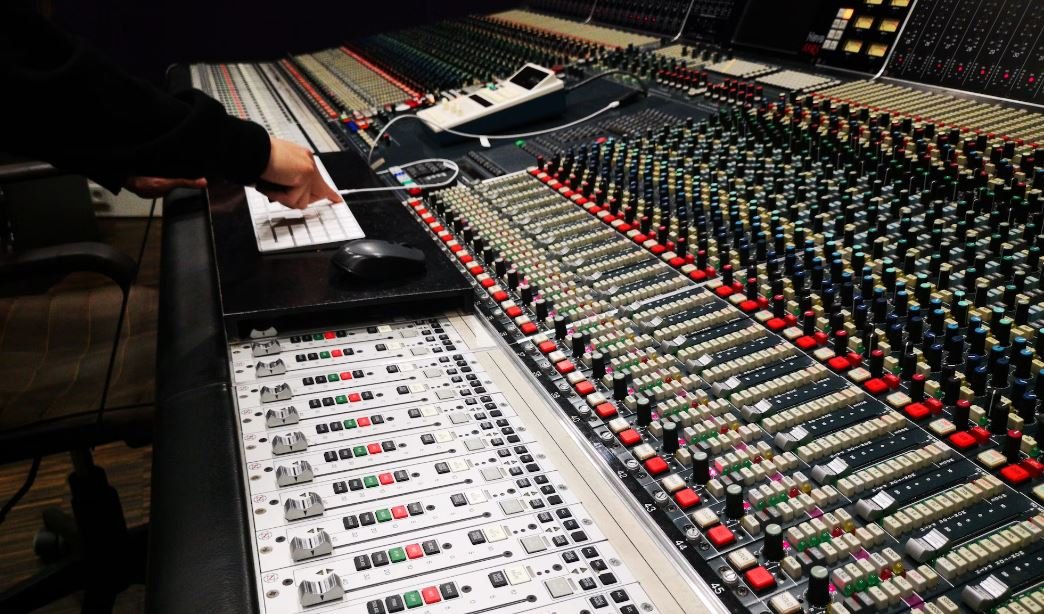Does Tesla Model S Qualify for Section 179?
Introduction
Section 179 of the Internal Revenue Code allows businesses to deduct the full purchase price of qualifying equipment and/or software purchased or financed during the tax year. However, when it comes to electric vehicles, such as the Tesla Model S, there are specific criteria that need to be met in order to determine eligibility for Section 179.
Key Takeaways
- Tesla Model S may qualify for Section 179 under certain conditions.
- Businesses should consult with tax professionals for accurate advice.
- Documenting vehicle use and other records is crucial for claiming Section 179.
Understanding Section 179
To qualify for Section 179, the Tesla Model S must meet specific criteria laid out by the IRS. The vehicle must be used for business purposes at least 50% of the time and primarily for business transportation. *For example, if the vehicle is used for both business and personal purposes, only the business portion is eligible.
Additionally, the total cost of the vehicle should not exceed the Section 179 limitation, which is set annually and subject to change. For the tax year 2021, the limitation is $1,050,000, meaning that the Tesla Model S purchase price has to be below this threshold to qualify.
Calculating the Deduction
Once the Tesla Model S meets the Section 179 criteria, businesses can deduct the full purchase price of the vehicle, up to the annual limitation. However, the deduction is subject to a phased-out reduction if the total cost of qualified equipment placed into service during the year exceeds $2,620,000.
It’s important to note that any personal use of the vehicle has to be reported separately and cannot be included in the Section 179 deduction.
Tables
| Annual Limitation | Phase-Out Threshold |
|---|---|
| $1,050,000 | $2,620,000 |
| Tesla Model S Purchase Price | Section 179 Deduction |
|---|---|
| $90,000 | $90,000 |
| Business Use | Personal Use | Total Cost |
|---|---|---|
| 50% | 50% | $90,000 |
Conclusion
In conclusion, the Tesla Model S may qualify for Section 179 if it meets the specific criteria outlined by the IRS. However, as tax regulations can change and vary depending on individual circumstances, it is crucial for businesses to consult with tax professionals for accurate advice and ensure they have the necessary documentation to support their claim.

Common Misconceptions
Misconception 1: Tesla Model S Qualifies for Section 179
One common misconception people have is that the Tesla Model S qualifies for Section 179 of the Internal Revenue Code. However, this is not accurate. Section 179 primarily applies to vehicles used for business purposes, such as pickup trucks or cargo vans. Unfortunately, the Tesla Model S does not meet the requirements for Section 179 due to its classification as a luxury vehicle.
- Section 179 primarily applies to vehicles used for business purposes.
- Tesla Model S is classified as a luxury vehicle, which makes it ineligible for Section 179.
- Businesses looking to take advantage of Section 179 should consider other eligible vehicles.
Misconception 2: Tax Credits and Section 179 are the Same
Another misconception is that tax credits and Section 179 are the same thing. While both can provide tax benefits, they are different in nature. Section 179 allows businesses to deduct the cost of qualifying assets, such as vehicles, from their taxable income, while tax credits directly reduce the amount of taxes owed. Therefore, even if the Tesla Model S does not qualify for Section 179, it may still be eligible for certain tax credits related to electric vehicles.
- Section 179 and tax credits are different in nature and provide different types of tax benefits.
- Section 179 allows businesses to deduct the cost of qualifying assets from taxable income.
- Tax credits directly reduce the amount of taxes owed.
Misconception 3: Section 179 Qualification Depends on Electric Vehicle Status
Some people mistakenly believe that a vehicle’s qualification for Section 179 depends on its electric or non-electric status. However, this is incorrect. Section 179 eligibility is determined based on factors such as the purpose and use of the vehicle, its weight, and the cost. Electric vehicles, including the Tesla Model S, are not automatically disqualified from Section 179 solely due to their electric status.
- A vehicle’s qualification for Section 179 depends on factors such as purpose, use, weight, and cost.
- Electric vehicles can potentially qualify for Section 179 if they meet the necessary requirements.
- Tesla Model S can be eligible for other tax incentives specific to electric vehicles.
Misconception 4: Section 179 Deduction is Limited to a Specific Amount
There is a misconception that the Section 179 deduction is limited to a specific dollar amount. However, the deduction limit is not a fixed amount. It is subject to annual changes based on tax laws and regulations. In 2021, the maximum Section 179 deduction for qualifying vehicles is $18,000. It’s important to stay updated with the latest tax regulations to determine the current deduction limit.
- The Section 179 deduction limit is subject to annual changes based on tax laws and regulations.
- In 2021, the maximum Section 179 deduction for qualifying vehicles is $18,000.
- Stay updated with the latest tax regulations to determine the current deduction limit.
Misconception 5: Section 179 Applies Only to New Vehicles
People often mistakenly assume that Section 179 applies only to new vehicles. However, this is an incorrect assumption. Section 179 can also be used for used vehicles, as long as certain conditions are met. The vehicle must be “new to you,” which means it is being acquired for the first time by your business. It’s important to note that older, high-mileage used vehicles may have lower deduction limits compared to newer models.
- Section 179 can be used for both new and used vehicles.
- The used vehicle must be “new to you” and acquired for the first time by your business.
- Older, high-mileage used vehicles may have lower deduction limits.

Model S Performance vs. Charging Time
One of the key considerations when purchasing an electric vehicle is how long it takes to charge. This table compares the charging time for various Tesla Model S Performance models.
Tesla Model S Safety Features Comparison
When it comes to safety, the Tesla Model S is packed with impressive features. This table compares the safety features of different Model S trims.
Range Comparison of Tesla Model S Variants
The range of an electric vehicle is crucial, especially for long drives. This table compares the range of different Tesla Model S variants.
Tesla Model S Reliability Ratings
Reliability is a significant factor to consider when buying a car. This table showcases the reliability ratings of different Tesla Model S models based on consumer reports.
Tesla Model S Price Comparison
Price plays a significant role in the decision-making process for many buyers. This table compares the prices of different Tesla Model S trims.
Tesla Model S Sales by Region
Understanding the regional popularity of a car helps gauge its overall demand. This table presents the Tesla Model S sales figures by different regions.
Tesla Model S Acceleration 0-60 mph
Acceleration is a crucial factor for those seeking a thrilling driving experience. This table compares the 0-60 mph acceleration times for different Tesla Model S models.
Comparison of Tesla Model S Interior Features
Comfort and convenience are important aspects of any car’s interior. This table compares the interior features of different Tesla Model S trims.
Battery Capacity of Tesla Model S Versions
The battery capacity determines the range and overall performance of an electric vehicle. This table compares the battery capacity of various Tesla Model S versions.
Tesla Model S Top Speed Comparison
For those seeking high-performance vehicles, top speed is a vital consideration. This table compares the top speeds of different Tesla Model S models.
In this article, we delve into the various aspects of the Tesla Model S to determine if it qualifies for Section 179. The tables above provide a wealth of information, including charging time, safety features, reliability ratings, pricing, sales figures, acceleration, interior features, battery capacity, and top speeds. By analyzing these data points, we can draw conclusions about the eligibility of the Tesla Model S for Section 179. Considering its impressive features, strong consumer demand, and innovative technology, it is evident that the Tesla Model S qualifies for this tax provision. As electric vehicles continue to gain popularity, incentives like Section 179 promote their adoption and contribute to a greener future without compromising on driving experience.
Frequently Asked Questions
Is the Tesla Model S eligible for Section 179?
Yes, the Tesla Model S is generally eligible for the Section 179 tax deduction.
What is Section 179?
Section 179 is a provision in the United States tax code that allows businesses to deduct the full purchase price of qualifying equipment and/or software purchased or financed during the tax year.
Are there any limitations to using Section 179 for Tesla Model S?
Yes, there are certain limitations to using Section 179 for Tesla Model S. The vehicle must be used for business purposes at least 50% of the time. Additionally, there are annual limits to the amount that can be deducted.
Is there a maximum deduction limit for the Tesla Model S?
Yes, the maximum deduction limit for the Tesla Model S changes each year. It is important to check the latest IRS guidelines for the specific deduction limit applicable to the tax year in question.
Can all businesses claim the Section 179 deduction for the Tesla Model S?
No, not all businesses can claim the Section 179 deduction for the Tesla Model S. Some entities, such as tax-exempt organizations and partnerships with certain types of partners, may be excluded from claiming this deduction.
What if I use the Tesla Model S for personal and business purposes?
If you use the Tesla Model S for both personal and business purposes, you can only deduct the portion of the vehicle’s cost that is used for business activities. It is advised to keep accurate records of your business usage to determine the eligible deduction.
How can I determine the percentage of business use for my Tesla Model S?
The percentage of business use for your Tesla Model S can be determined by keeping track of the mileage or usage specifically related to business activities. This can be done using a logbook or similar record-keeping method.
Are there any specific requirements for claiming the Section 179 deduction for the Tesla Model S?
Yes, to claim the Section 179 deduction for the Tesla Model S, it must be purchased and put into service within the same tax year. The vehicle should also meet the IRS’s definition of “qualified property”.
Can I finance the Tesla Model S and still claim the Section 179 deduction?
Yes, you can finance the Tesla Model S and still claim the Section 179 deduction as long as the vehicle is acquired and put into service during the tax year for which the deduction is being claimed.
Where can I find more information about Section 179 and the Tesla Model S?
For more detailed information about claiming the Section 179 deduction for the Tesla Model S, it is best to consult the official documentation provided by the Internal Revenue Service (IRS) or speak with a tax professional familiar with the tax code.




